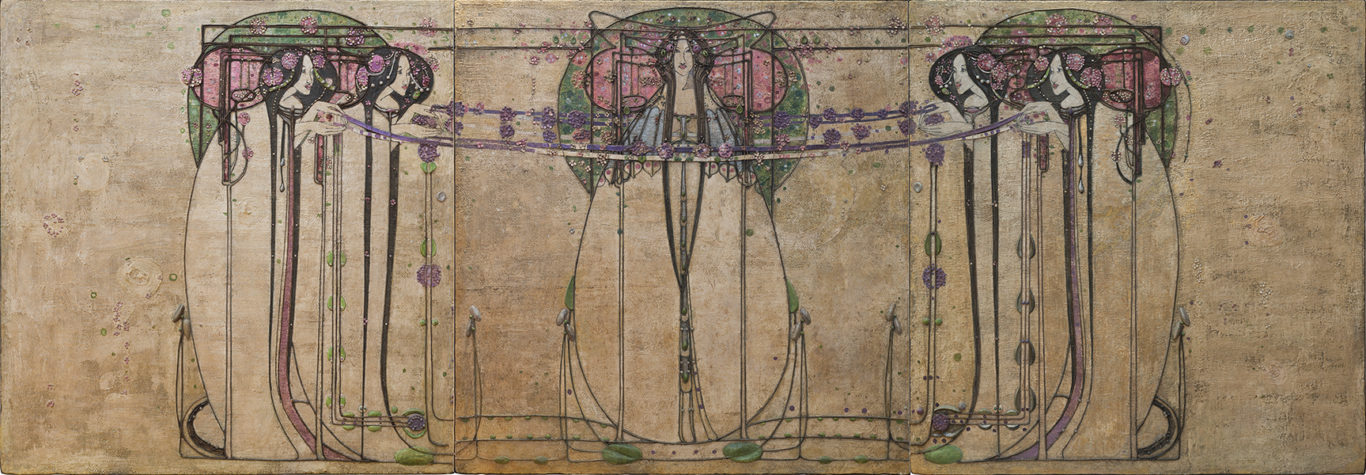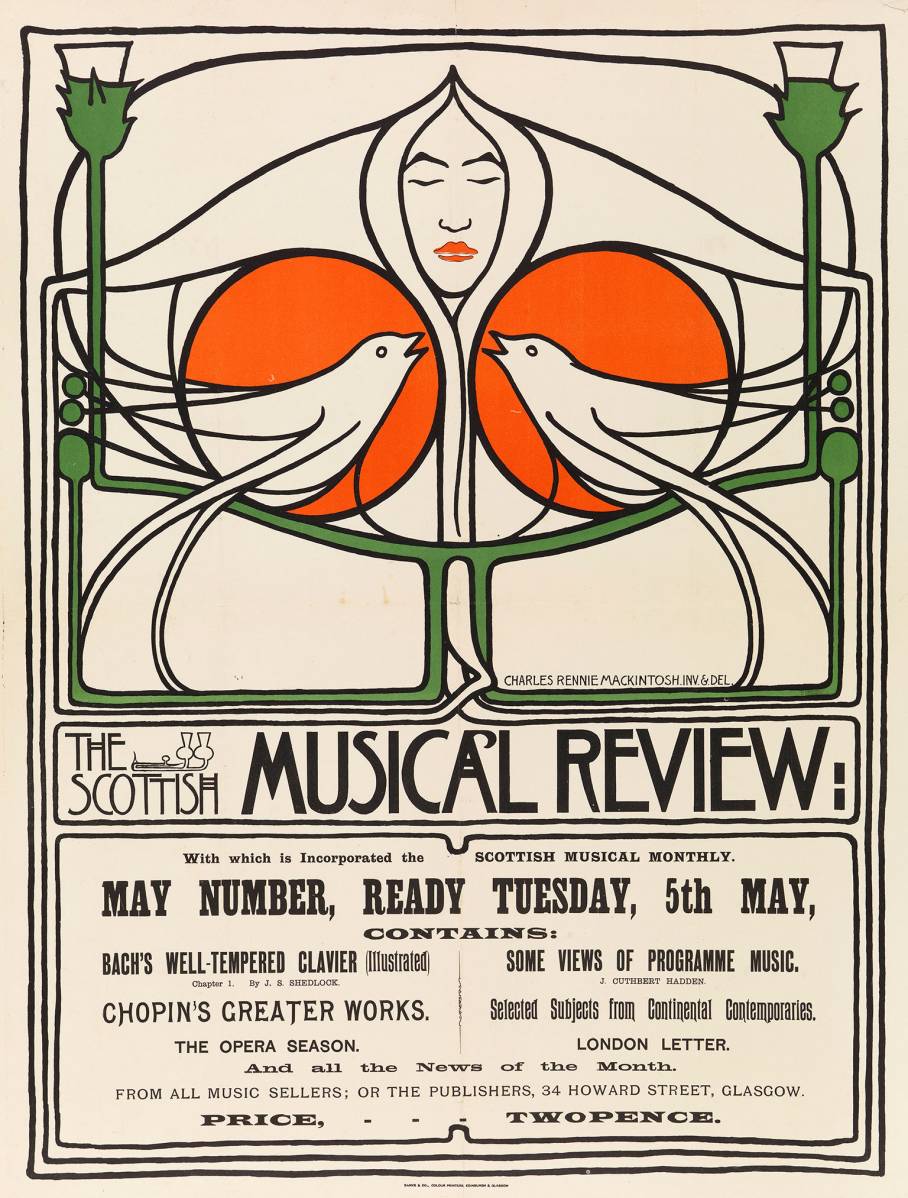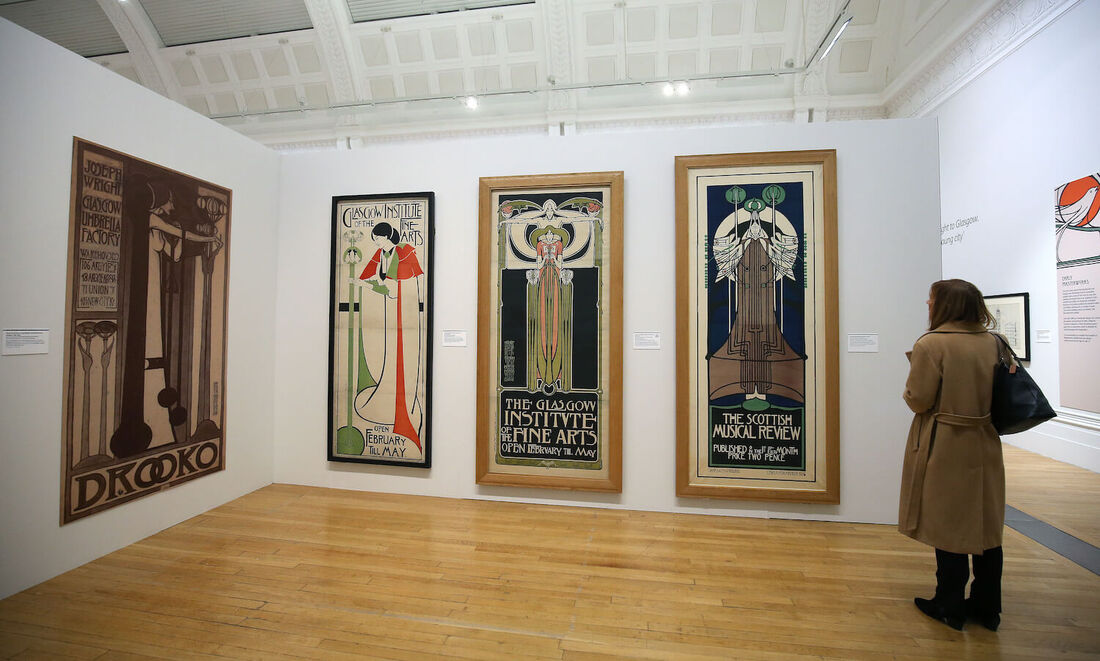The work and life of Glasgow-based designer Charles Rennie Mackintosh (1868-1928) generates constant interest among design and architecture enthusiasts, and his place as an icon has been cemented over and over again since he was first rediscovered in the 80s. Now, Walker Art Gallery in Liverpool has opened a monograph: ‘Charles Rennie Mackintosh: Making the Glasgow Style,’ presenting the large picture of his career which began at 28, when he began to undertake the interior decoration for the artistic tearooms run by Glasgow businesswoman Miss Catherine Cranston until his late years in exile.
The most significant aspect of this exhibition is the definition of the radical and reformed ‘Glasgow Style,’ which although practiced by Mackintosh and his wife Margaret McDonald, was not invented by the two, but grew out of young talents concentrated at the Glasgow School of Art, chief among them was James Herbert McNair (who married Margaret Macdonald’s sister Frances). It is thanks to Mackintosh’s legacy that the style, an original combination of Art Nouveau, the Aesthetic Movement, and Arts and Crafts, with a touch of Scottish tradition is often attributed to him.
The fact that Mackintosh’s masterwork, the Glasgow School of Art, which he completed in 1909, suffered a tragic lass last year, has brought his name to global attention. This exhibition is a great opportunity to learn about the man who has become a national treasure.
The most significant aspect of this exhibition is the definition of the radical and reformed ‘Glasgow Style,’ which although practiced by Mackintosh and his wife Margaret McDonald, was not invented by the two, but grew out of young talents concentrated at the Glasgow School of Art, chief among them was James Herbert McNair (who married Margaret Macdonald’s sister Frances). It is thanks to Mackintosh’s legacy that the style, an original combination of Art Nouveau, the Aesthetic Movement, and Arts and Crafts, with a touch of Scottish tradition is often attributed to him.
The fact that Mackintosh’s masterwork, the Glasgow School of Art, which he completed in 1909, suffered a tragic lass last year, has brought his name to global attention. This exhibition is a great opportunity to learn about the man who has become a national treasure.






